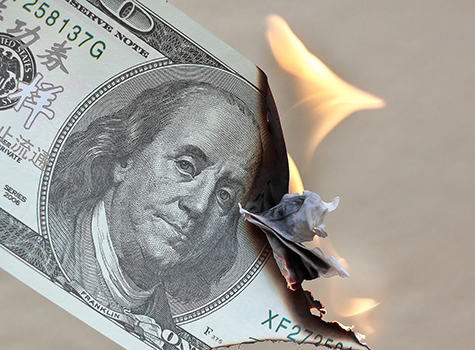By Ketu Desai

The Fed has got our backs. That is the takeaway from the March Fed meeting. Despite a couple of higher-than-expected inflation points, the Fed still expects to cut rates three times this year. The rate cuts are likely to start in June. While delivering rate cuts, the Fed revised their growth forecast. This is a favorable backdrop for risk-taking. We are starting to see just that. With rate cuts coming and millennials in their home buying years, housing activity will likely rebound. Building permits were up 2.4 percent just in the last month. KB Home reported a 55 percent increase in net new orders for the first quarter. We saw a couple of well received high-profile IPOs in March. It is likely 2024 will see over 200 IPOs, bringing us back to pre-pandemic levels. Corporate confidence is on the rise.
The CEO Confidence Index hit the highest level in two years. The combination of a favorable macro backdrop and the necessity of AI to compete will unleash a cap-ex cycle, led by technology. Micron, which makes semiconductors that are an essential building block for a lot of technology, provided guidance that is sold out for 2024 and much of 2025 already. We have heard similar commentary this year from companies across technology including TSMC, Super Micro, Dell, Oracle, ASML, ServiceNow, and Broadcom.
It is not just technology that is experiencing a cap-ex cycle, manufacturing PMI moved to the highest level since June 2022, solidly in expansionary territory. The Philly Fed CapEx index exploded higher in March to the highest level in a couple of years. The latest durable goods orders surprised to the upside. The CapEx cycle is just starting, it is broad, and it will likely last a while.
There is plenty of fuel for risk-taking in the form of cash. Corporations have approximately $4 trillion in cash on their balance sheets. Banks are likely to lend more in 2024, as there is less pressure on their balance sheets. In recent weeks, Chair Powell said that Basel III endgame will be reconsidered. This will be a significant release of capital for banks to be more active. There is nearly $2 trillion in private credit that is looking to be deployed. Private equity has another $2.6 trillion in dry powder. There is $6.1 trillion in money market funds. All of this cash has had the benefit of earning 5 percent.
The Fed will begin cutting this year and they will continue until they get to the neutral rate. As the rate on cash moves lower, holders will have to make a decision, especially as the real rate and time become their enemy. The risk/reward framework for putting this cash to work is favorable. If growth does slow, the Fed will cut more than expected to support the economy. Not to mention, they have the capacity on their balance sheet to help support markets. If growth continues and we are on the verge of a new CapEx cycle, investors are likely to earn far more investing in risk assets than what they will sitting in cash.
For much of the last fifteen years, tech has been what I like to call a beta sector. By this I mean that it was a sector that traded together with little dispersion. It was hard to pick a tech stock that went down. In recent weeks, we have started to witness tech investors becoming more selective. High profile names such as Adobe, Snowflake, and Palo Alto Networks saw their stock severely punished after disappointing results. As AI becomes the dominant theme, the market is separating winners and losers within tech, making it an alpha sector. While tech moves to an alpha sector, value sectors such as industrials and financials are moving to beta sectors.
The spread between growth and value is wider than the dot.com bust. The Fed cutting and continued economic resiliency will serve as the catalyst for the spread to mean revert. The market is starting to front run this. Both sectors have outperformed tech YTD. Financials have upside from M&A, capital markets, de-regulation, and yield-curve dis-inversion. Industrials outperform when PMIs bottom and turn up. In particular, when PMIs are less than 47, the 12M forward return has historically been 22 percent, with a 95 percent-win ratio.
Industrials’ earnings are getting revised higher, expected to grow 14.4 percent next year. The fiscal stimulus that was approved a couple of years ago is just now starting to hit the system and will accelerate in 2024. Industrials benefit from many long-term themes of energy transition, supply chain onshoring, a new aerospace cycle, growing importance of national defense, and infrastructure spending. Longer-term, AI will lead to margin expansion. The combination of steady economic growth, lower inflation, rate cuts, earnings growth, a CapEx cycle, and margin expansion will make many cyclical value sectors market leaders.
Looking forward, the market will focus on first quarter earnings, the economic data, the election, and geopolitics.



